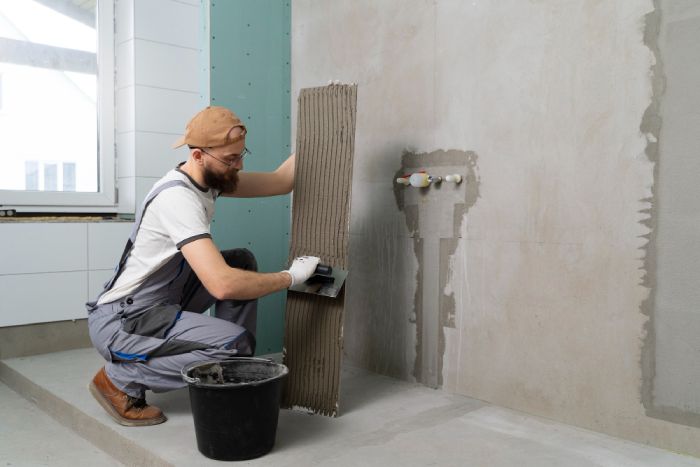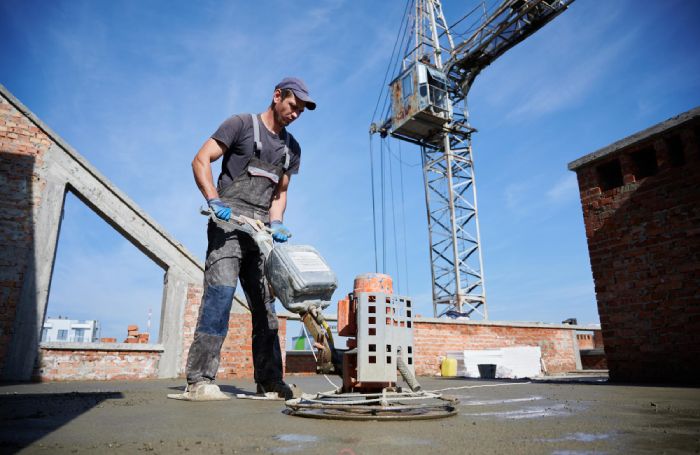Are you looking forward to adding a touch of luxury and sophistication to your home? One way of the best ways to do this is by installing best epoxy flooring. This flooring material offers many benefits, such as being easy to clean and maintain while giving an attractive, modern look. If you want the best epoxy flooring in your home, read on!
In this article, you will learn the best epoxy flooring for your home. We will explain different types of materials that can be used for the base layer, what kind of finish works best epoxy flooring, and other tips for ensuring a long-lasting, beautiful surface.
Benefits Of Best Epoxy Flooring
Best epoxy flooring is a great way to spruce up your home and make it look like something out of the future. It’s not just about looks, either – epoxy offers major benefits that can save you time, money, and hassle. Let’s take a closer look at why an epoxy coating may be right for your house.
- Best epoxy floors are incredibly durable and resistant to wear and tear which means you don’t need to worry about spills or scuffs damaging your floor in the long run.
- They’re easy to clean: simply give them a quick scrub with soap and water every now and then, and they’ll stay looking brand new!
- Their superior strength prevents cracking or chipping over time. That translates to eliminating costly repairs later.
Best poxy floors also offer flexibility when it comes to design options. You can customize your floor with different colors and textures for a unique look that perfectly complements the rest of your home decor. So if you’re looking for a cost-effective upgrade that provides both style and substance.
Preparing The Subfloor For An Epoxy Coating
Before applying a coat of epoxy on your floors, it is important to prepare the subfloor properly. While this process can be time-consuming and tedious, but when done correctly, you’ll have a beautiful, durable epoxy floor that lasts years. Here are the steps for the correct preparation of the subfloor:
- Start by cleaning the surface of dirt, dust, and debris. Use either a vacuum cleaner or broom to remove all loose material from the area before wiping it down with a damp cloth.
- Level any high/low spots to ensure no bumps once the epoxy is applied. You may need to use patching materials such as concrete patches or self-leveling compounds, depending on how uneven your subfloor is.
- Remove all existing coatings (paint, sealers, etc.) if applicable. A paint stripper may be necessary for tougher coatings like oil-based paints.
- Repair cracks or holes in the subfloor using wood filler or spackling paste, so they don’t show through after applying the epoxy coating.
Following these steps will give you a solid foundation to apply an epoxy coating without worrying about poor adhesion leading to chipping and peeling later. This extra time now helps ensure your new epoxy floors look great for many years!
Applying An Epoxy Coating
Applying an epoxy coating is a must to bring your home to the next level of sophistication. This task can be quite daunting for some, but achieving a flawless finish with proper guidance and equipment will become much easier.
- First, you’ll need to decide what epoxy coating you want to apply. There is a variety available on the market, so consider factors such as durability, ease of application, and aesthetics before making your choice.
- Once selected, it’s time to start preparing the subfloor.
- Thoroughly clean the area that needs to be covered by the epoxy in order to ensure maximum adhesion between surfaces.
- Make sure all cracks or holes have been filled using appropriate filler material and sand them down until they’re flush with the surrounding surface; this step is essential if you want a smooth finish without any bumps or inconsistencies.
- Finally, use painter’s tape to protect areas where you don’t want any product applied – like walls or door jambs – while ensuring there won’t be any overspray during application.
It is time to get up close and personal with a paint roller! Make sure you stir your chosen epoxy thoroughly before starting its application process; roll it onto the floor one section at a time in overlapping strokes for full coverage and evenness across the entire flooring area. Before moving on to another section, allow sufficient drying time according to manufacturer instructions (typically around 24 hours).
With these steps correctly followed and adequate care taken throughout each stage of preparation and installation of your new and best epoxy flooring, you should be rewarded with a beautiful outcome that lasts years ahead!
Caring For An Epoxy Floor

Caring for an epoxy floor isn’t just a one-time job. Proper surface maintenance is essential to ensure that your epoxy installation lasts its maximum lifespan and looks new for years to come. Think of it as brushing your teeth – if you care for them, they’ll stay healthy; ignore it, and they won’t last very long!
A good way to illustrate this concept is with the story of my friend’s garage renovation project. After watching a few YouTube tutorials, he installed an epoxy coating himself and left it alone when he was done. A year later, not only was his carport area still quite slick from all the oil spills and other messes that had accumulated over time but there were also starting to be cracks in the coating where dirt had collected underneath it.
The moral? Taking proper care of an epoxy floor is key to keeping it looking great and extending its life span. This means regularly sweeping away debris, cleaning up spilled liquids or chemicals quickly, and occasionally scrubbing the entire surface with a mild detergent solution to remove built-up grime. It’s easy enough – just set aside some time each week or month for regular upkeep and enjoy having beautiful floors without too much effort!
Troubleshooting Common Issues With Epoxy Flooring
Troubleshooting common issues with epoxy flooring is like sorting through a jigsaw puzzle. It may seem tedious, but getting the job done right is important. Here are four key steps for troubleshooting epoxy flooring:
- Check the environment: Make sure humidity and temperature levels are within the manufacturer’s specifications for optimal application.
- Ensure proper mixing: Thoroughly mix all components until there is an even consistency, as improper mixing can lead to weak adhesion or bubbling in the finished product.
- Apply correctly: Use appropriate tools such as a squeegee or trowel when applying epoxy for best results. Also, don’t overload the coating on one area of the surface; spread it out evenly across the entire space.
- Inspect surfaces before application: Be sure any concrete floors have been properly prepared and cleaned before installation. Otherwise, unwanted bumps or cracks could occur once the epoxy has dried. Check that any previous coatings were removed before installing new ones, so they adhere properly to each other.
These four steps should help you quickly and efficiently troubleshoot issues when dealing with epoxy flooring. Taking extra time now will save you hassle later – and keep your home looking great!
Conclusion
Best poxy flooring is a great way to enhance the look and durability of your home. It offers many benefits, from easy maintenance to improved aesthetic appeal. With careful preparation and application, you can ensure that your epoxy coating will last for years. Proper care and attention are essential for maintaining your epoxy floors in good condition over time. When issues arise with your epoxy floors, troubleshooting them quickly can help avoid more costly repairs.
Installing an epoxy floor requires patience and dedication, like any home improvement project. It takes some time to get the perfect finish on your floors. However, all these steps are necessary to ensure effective investment into improving your home’s value and beauty!
Make sure the best epoxy flooring is installed on your property, Martin Epoxy will guarantee you’re on the right track. Contact us today so we can help you get started with your home improvement project correctly.






